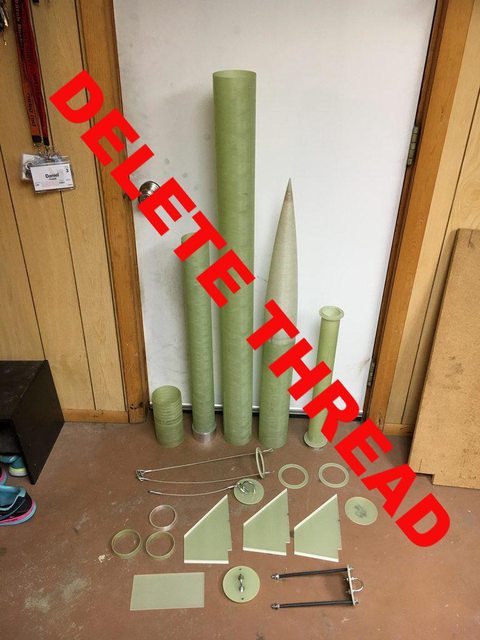patelldp
Well-Known Member
- Joined
- Jan 23, 2009
- Messages
- 5,647
- Reaction score
- 101
I finally got my hands on a Dynacom rocket. I have been aware of these kits since back when I entered into the hobby in 1999-2000 timeframe, but I never had the money to buy one and never came across anyone with one in the North East. Dynacom went away sometime around 2001-2002 and Air-X emerged as a streamlined product line from the same production entity (Eric Haberman). Production of those kits would cease a handful of years later, leaving behind very little documentation of any of the combined Dynacom/Air-X offerings.
Fast forward to 2014 when this thread emerged on TRF. Eric's appreciation for the nostalgic offerings of Dynacom/Air-X resulted in a sweet build thread of the Air-X Delamar, showing how kits used to be made. I share the same appreciation!
I was able to find an individual with many of these gems in his possession. Said individual was willing to part with his 4.1" Scorpion kit for a fair price and I couldn't say no. That brings us to yesterday, when I received the following:

That's a kit...here's some highlights:
This build will be a "labor of love," meaning it will be slow and methodical. I want to do it right as I'll likely never have another shot at it.
For those of you wishing to see larger pictures or follow along outside of TRF, you can view the album here: https://imgur.com/a/94z3i
Fast forward to 2014 when this thread emerged on TRF. Eric's appreciation for the nostalgic offerings of Dynacom/Air-X resulted in a sweet build thread of the Air-X Delamar, showing how kits used to be made. I share the same appreciation!
I was able to find an individual with many of these gems in his possession. Said individual was willing to part with his 4.1" Scorpion kit for a fair price and I couldn't say no. That brings us to yesterday, when I received the following:

That's a kit...here's some highlights:
- Pre-slotted and drilled main body tube and payload tube
- Precision cut fins that come beveled
- Centering rings and bulkheads, including two stepped bulkheads for the altimeter bay
- Shock cord leaders to prevent cord scorching
- 54mm motor adapter
- 76mm and 54mm cir-clip (similar to slimline) motor retainers
- FWFG nose
- All necessary spacers for using both snap ring and AT/CTI type motors
This build will be a "labor of love," meaning it will be slow and methodical. I want to do it right as I'll likely never have another shot at it.
For those of you wishing to see larger pictures or follow along outside of TRF, you can view the album here: https://imgur.com/a/94z3i
Last edited by a moderator:

















